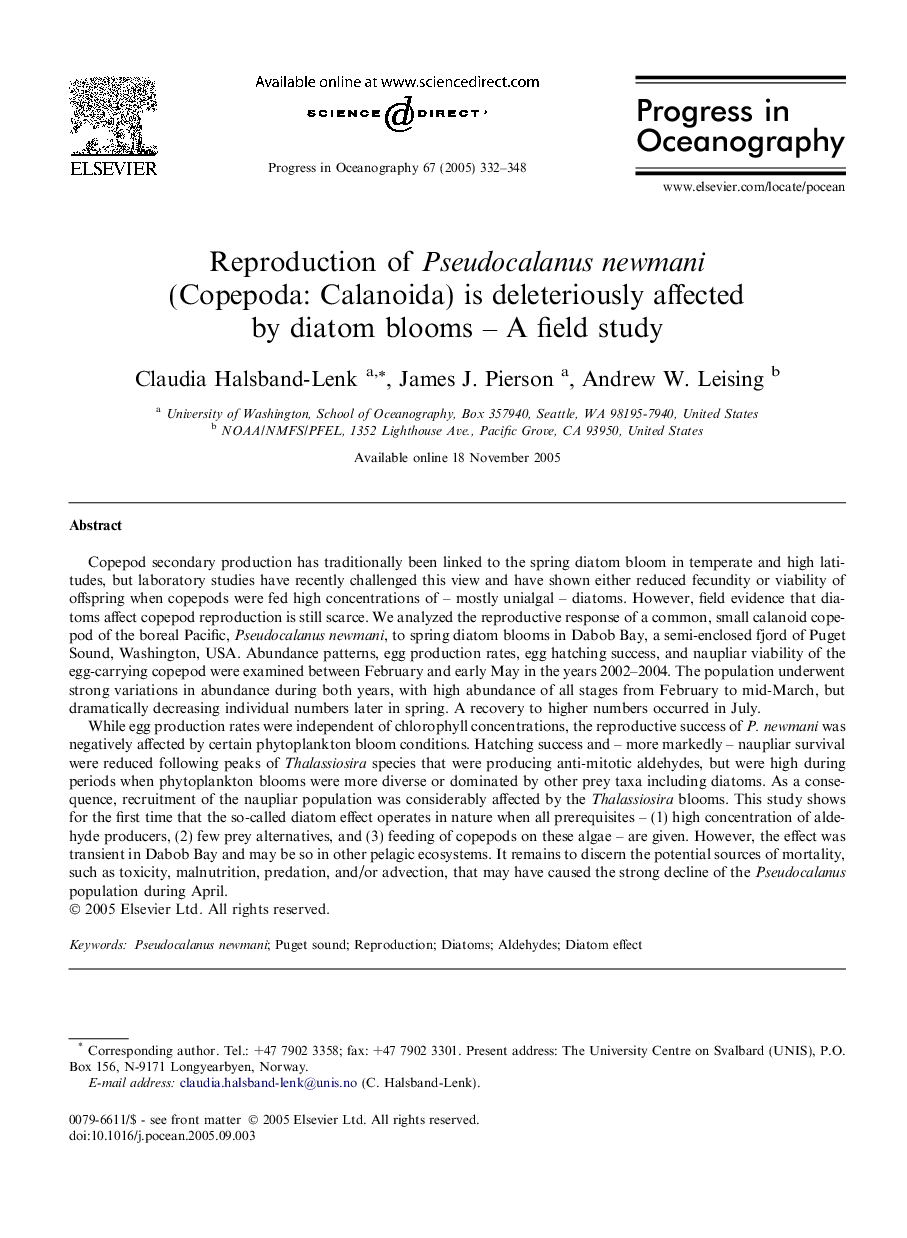| Article ID | Journal | Published Year | Pages | File Type |
|---|---|---|---|---|
| 9485155 | Progress in Oceanography | 2005 | 17 Pages |
Abstract
While egg production rates were independent of chlorophyll concentrations, the reproductive success of P. newmani was negatively affected by certain phytoplankton bloom conditions. Hatching success and - more markedly - naupliar survival were reduced following peaks of Thalassiosira species that were producing anti-mitotic aldehydes, but were high during periods when phytoplankton blooms were more diverse or dominated by other prey taxa including diatoms. As a consequence, recruitment of the naupliar population was considerably affected by the Thalassiosira blooms. This study shows for the first time that the so-called diatom effect operates in nature when all prerequisites - (1) high concentration of aldehyde producers, (2) few prey alternatives, and (3) feeding of copepods on these algae - are given. However, the effect was transient in Dabob Bay and may be so in other pelagic ecosystems. It remains to discern the potential sources of mortality, such as toxicity, malnutrition, predation, and/or advection, that may have caused the strong decline of the Pseudocalanus population during April.
Related Topics
Physical Sciences and Engineering
Earth and Planetary Sciences
Geology
Authors
Claudia Halsband-Lenk, James J. Pierson, Andrew W. Leising,
